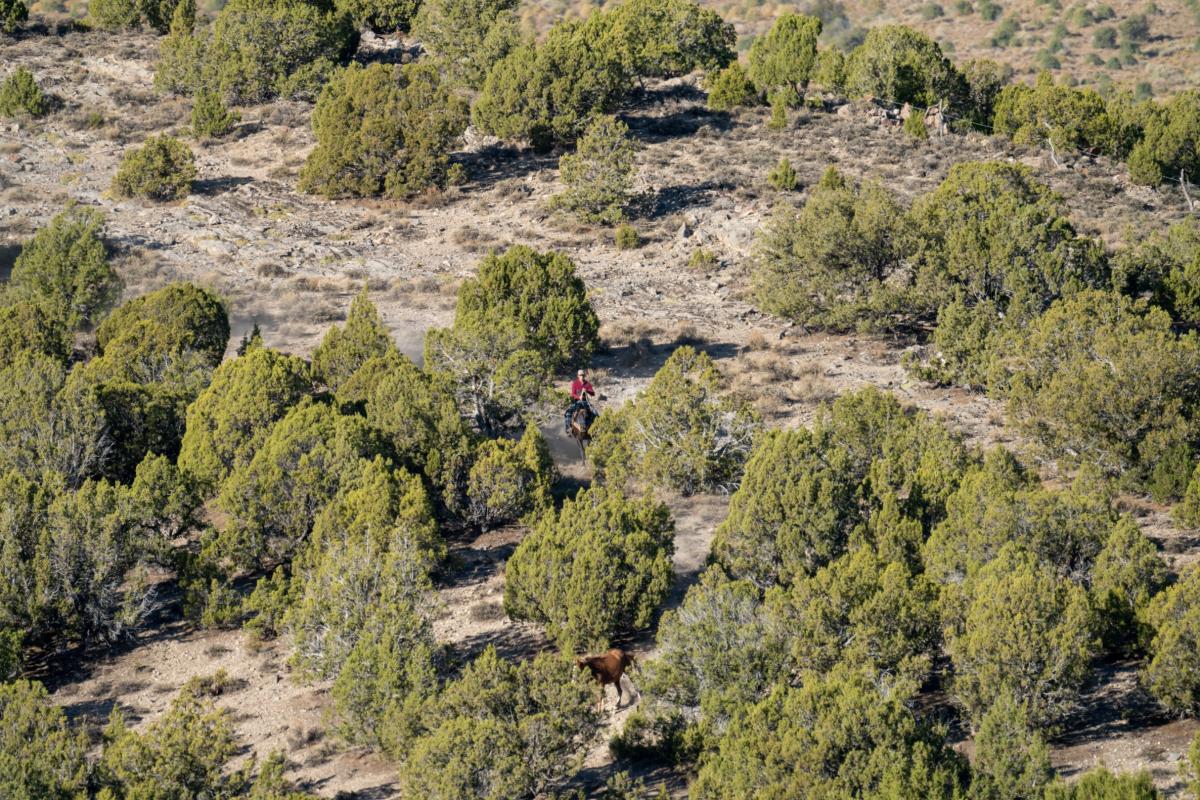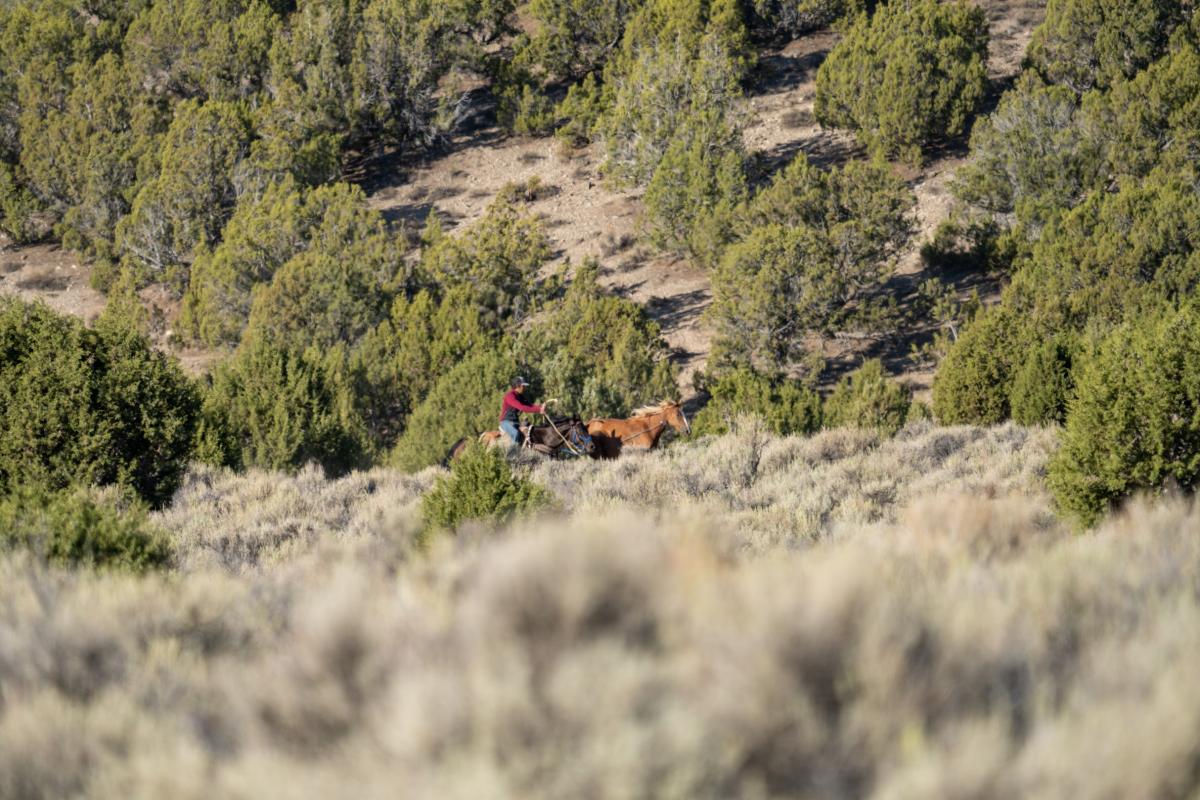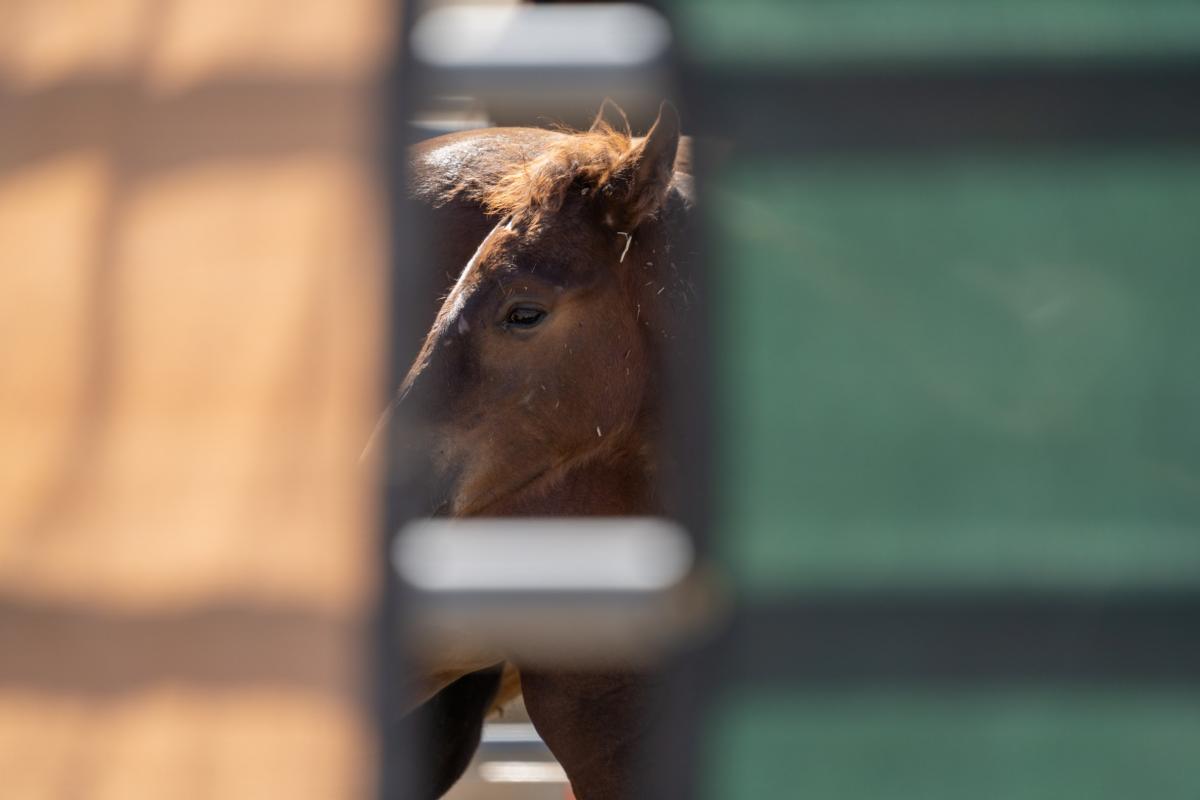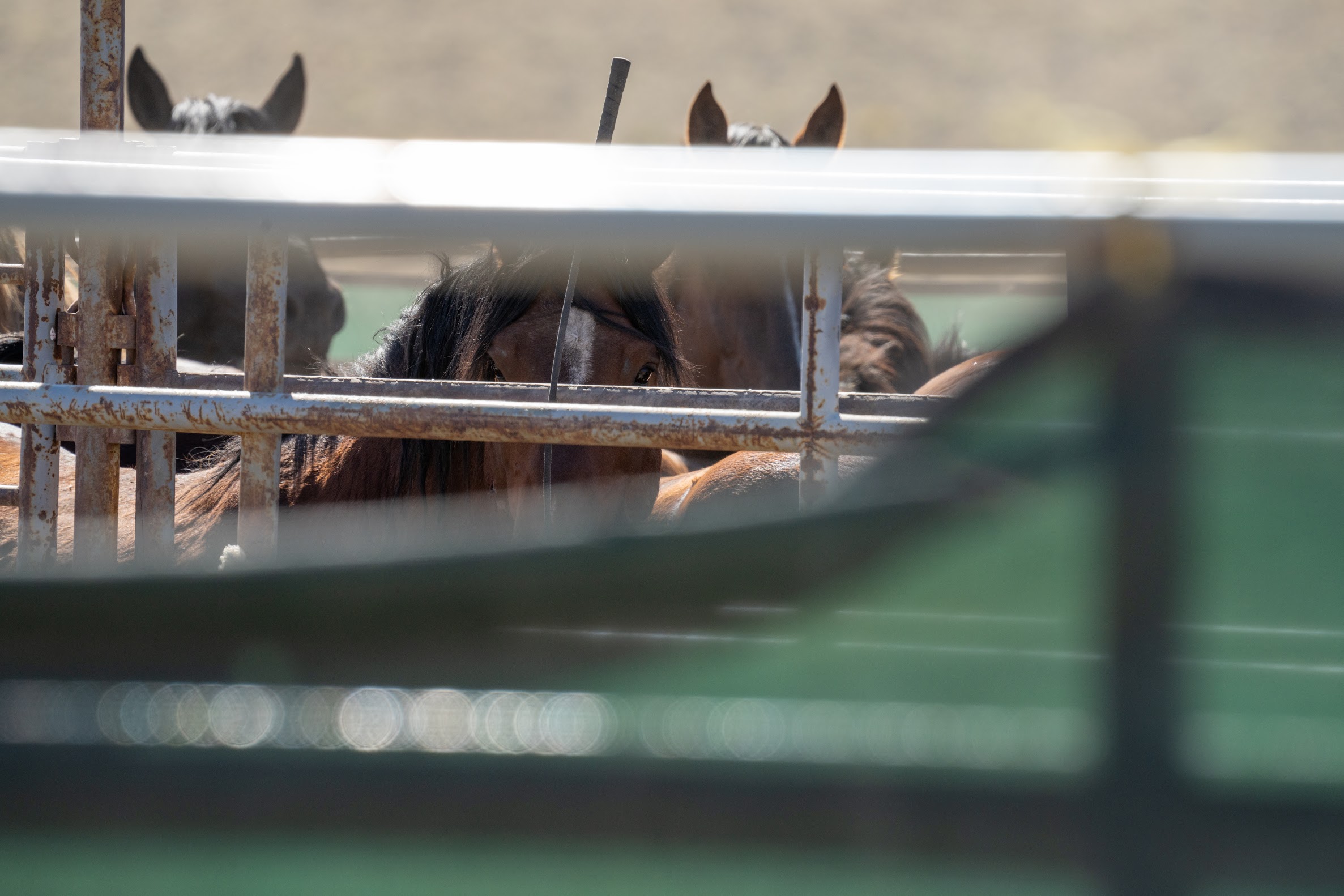>>WE'RE CALLING FOR AN INVESTIGATION AND STOP TO THE DIAMOND ROUNDUP - SIGN THE PETITION<<
The Diamond Complex is comprised of three HMAs in Nevada, Diamond, Diamond Hills South and Diamond Hills North. The Complex encompasses 258,278 acres of public and private lands. The combined Appropriate Management Level (AML) for the Diamond Complex is 123-210 wild horses and the BLM estimates there are currently 1,495 wild horses.
In contrast, the BLM permits 24,348 cattle and sheep livestock AUMs within the complex, while only allowing for 2,520 AUMs for wild horse use. Even at the current estimated wild horse use of 5,448 AUMs, livestock by far overshadow horse use in this area.
The BLM’s objective for this operation is to capture approximately 1,225 and remove approximately 1,165 wild horses within and outside of the boundaries of the Complex. Approximately 30 mares will reportedly be treated with PZP-22 and released back to the Diamond HMA along with an equal number of stallions. The BLM expects the helicopter roundup to take approximately 20-25 days.
ROUNDUP
Current totals
- Captured/removed: 1196
- Deaths: 26
September 29, 2020: 0 wild horses were captured and there was one death.
- The BLM reported one 7 year old sorrel mare (BCS-4), suffered a broken neck (acute) due to an impact with a panel while she was being sorted for fertility control.
September 28, 2020: 65 wild horses were captured and there were no deaths.
September 27, 2020: 42 wild horses were captured and there were no deaths.
September 26, 2020: 19 wild horses were captured and there were no deaths.
September 25, 2020: 9 wild horses were captured and there were no deaths.
September 24, 2020: 51 wild horses were captured and there were no deaths.
September 23, 2020: 27 wild horses were captured and there were no deaths.
September 22, 2020: 65 wild horses were captured and there were no deaths:
September 21, 2020: 0 wild horses were captured today
September 20, 2020: 42 wild horses were captured and there were another 4 deaths:
- 7 year old bay stallion, euthanized due to blind right eye (pre-existing)
- 7 year old bay mare, euthanized due to a club foot (pre-existing)
- 7 year old bay stallion, euthanized due to bilateral osteoarthritis of the carpal joints (pre-existing)
- 20 year old sorrel stallion (BCS 1.5)
September 27, 2020: 42 wild horses were captured and there were no deaths.
September 26, 2020: 19 wild horses were captured and there were no deaths.
September 25, 2020: 9 wild horses were captured and there were no deaths.
September 24, 2020: 51 wild horses were captured and there were no deaths.
September 23, 2020: 27 wild horses were captured and there were no deaths.
September 22, 2020: 65 wild horses were captured and there were no deaths.
September 21, 2020: 0 wild horses were captured today
September 20, 2020: 42 wild horses were captured and there were another 4 deaths:
-
7 year old bay stallion, euthanized due to blind right eye (pre-existing)
-
7 year old bay mare, euthanized due to a club foot (pre-existing)
-
7 year old bay stallion, euthanized due to bilateral osteoarthritis of the carpal joints (pre-existing)
-
20 year old sorrel stallion (BCS 1.5)
September 19, 2020: 92 wild horses were captured and there were another 3 deaths:
- 5 year old roan stallion, euthanized due to a club foot
- 4 year old roan mare, euthanized due to a umbilical hernia
- 4 year old bay mare, euthanized due to malformed thoracic vertebrae resulting in a deviated spinal column
September 18, 2020: 56 wild horses lost their freedom and another two lost their lives. Death toll from this operation has risen drastically to 18.
- 11 year old roan stallion euthanized due to a club foot
- 11 year old bay mare was euthanized by BLM after collapsing because of severe bloating
September 17, 2020: 105 wild horses were captured and there were 5 deaths:
- 10-year-old sorrel mare, broken neck
- 6-month-old bay stallion, found dead. According to BLM, the necropsy noted possible constriction at lower stomach
- 11-year-old bay mare, found dead. According to BLM, the necropsy noted symptoms similar to colic, i.e., gastric distention and bloating
- 4-year-old strawberry roan mare was euthanized due to symptoms similar to colic, i.e., gastric distention and bloating
- 3-year-old sorrel mare was euthanized due to colic, i.e., gastric distention and bloating
AWHC drove to the Palomino Valley Center, the BLM holding facility where the Diamond horses are being taken. The air quality was terrible, and the horses at the facility were very skiddish and nervous.
September 16, 2020: 104 wild horses lost their freedom and BLM euthanized 4:
- 10 year old roan stallion, club foot
- 8 year old sorrel stallion, broken right front shoulder
- 8 year old sorrel stallion, broken left rear leg
- 20+ year old palomino stud, poor body condition
Due to flat tires, AWHC was not in attendance today. However we were able to make it temporary holding. The horses were packed in tight, and many were stressed at the time. A Palomino had a visible injury on his face.
September 15, 2020: 108 wild horses were rounded up and removed and there was one death: A 3-year-old bay mare, euthanized due to a broken left front leg.
We departed with the BLM caravan for the trap site at 6 am, but it was not early enough. We arrived to the observation parking spot while the first helicopter run was already in progress, and were not allowed up to the viewing point until after the run completed.
- 1st run: We could only view from road because departure time was not early enough. A rider had to go get horses that were up on other side of a ridge. As we were down at the road we could not view.
- 2nd run: we were at observation point and could see a small group.
- 3rd run: A leading black horse saw the trap when at the metal gate and turned around to escape. A contractor 'swisher' intercepted waving his white flag, startling the horse back into the trap.
A white horse tried to jump out of the pen and gained a lot of height before its head came down hard on the panel. In a second attempt, the horse nearly cleared the fence before he fell and hit his head hard on the panel again.
Two horses turned around while they were closing the trap and tried to escape.
Stressed horses could be seen inside of the leaving trailer.
Horses continued to be very stressed and the corrals remained chaotic as the day before.
We, unfortunately, suffered two flat tires today. The first flat tire occurred on way into observation near the final observation point. A spare was put on at the end of the day, we appreciate BLM PR Chris Hanefeld for the assistance provided. The second flat tire happened on the way out just feet before the paved road, which was 65 miles from town and 50 miles from the nearest phone reception. We appreciate the BLM PR Reps Jess Harvey and Chris Hanefeld for waiting 1.5 hours for the tow truck to arrive, and BLM COR for calling the tow truck once he drove 50 miles to reception on his way back.
However, BLM COR from Battle Mountain was later completely out of line, verbally shouting at our Field Representative after viewing the video of a young horse being trampled in the corrals that AWHC posted to social media. Members of the public should not feel threatened or unsafe while attending of a federal operation. Instead, BLM COR should address the issue with its contractors to rectify the situation to make it safer for the horses.
September 14, 2020: 126 wild horses lost their freedom today, and 3 horses lost their lives:
-
At holding an 18-year-old grey stallion, euthanized by BLM due to a club foot.
-
At holding a 4-year-old sorrel mare was euthanized by BLM due to poor body condition.
-
At holding a 7-year-old black mare was euthanized by BLM after suffering a broken hip.
Today we were at a new trap site about 80 miles from town. AWHC's field representative was one of 3 members of the public onsite today.
It was an unusually long day, beginning at 6:30 am and the final run going until about 4 pm.
Today's observation was located about 1/4 mile from the trap site. It was nestled in the juniper trees as a blind like we've been requesting. We appreciate this very much. The shade is also safer for observers as it reduces sun exposure. The BLM representatives have all been cordial and respectful to us in the field on this roundup, which we appreciate.
Throughout the day, operations had to be paused due to errant wilderness adventurers showing up in their jeeps. One would be intercepted by Law Enforcement, only for another to arrive an hour later. This happened frequently enough we lost count. 4 or 5 times.
The day started out slow. Hours of waiting at observation.
Then a small group, followed by about an hour of waiting, then another small group.
After that, some very large groups were brought it:
- Some horses tried jumping over the trap panels throughout the day. One white horse appeared to be stuck in the bars as it remained elevated for about 20 seconds
- The white horse unstuck itself from the bars but tried to escape several more times, nearly clearing the panels.
- The horses at this location seemed larger in size and much more stressed than other locations.
As the day went on it got very dusty.
Finally to end the day, when it was about 90 degrees, the last run was a massive group of at least 80-100 horses. They had to be pushed into the trap in two batches because of space, and the first batch was immediately loaded into the horse trailers without time to settle in order to make room for the second wave.
- There was no time to settle.
- The horses were pressing up against each other like sardines on top of sardines in a can, and pressing up against the sides of the pen.
- The pen’s panel gave way but one of the contractors was able to lean his body against the panel to keep it from falling entirely; instead of loading the horse trailer, they brought the trailer around to prop up the pen for support. This meant waiting about 40 minutes for another trailer to return to trap.
A black horse jumps into the sagging panels and gets his hooves caught in the bars. His body twisted completely sideways and brought the panel down with it.
Horses were jumping on top of each other and trying to jump out of the pen.
- The contractor began putting jute on the part of the pen that had none; it was without jute to keep it looking subtle as a trap when they enter but was causing them to run into it and press against it once inside, so thankfully contractor took corrective action in the moment to adjust.
- There were too many stressed horses within the small corral and a young horse was knocked to the ground. He remained on the ground even though he was clearly being trampled within the commotion. As the Judas horse (the trained domestic horse owned by the contractors) was being brought out of the pen, you can clearly see the young horse still lying on the ground. At one point he tried to gain his footing only to be knocked over again. Thankfully, we did witness this horse get back onto his feet, but this was avoidable. The pen should have not been this small for the amount of horses.
- At the very end, after we were told to pack up, a huge brown horse CLEARED the right side of the pen; it was difficult to see because of dust from a truck blocking view, but we then observed two riders go with a lasso immediately after he jumped, and then within about 15 feet of the trap on the hillside they captured the brown horse by lasso.
September 13, 2020: 116 wild horses were rounded up and removed, and there was one death: According to BLM, "At holding a 2-3 year old Sorrel stallion, euthanized due to a displaced cervical vertebrae, severe weakness in all four limbs, and poor prognosis for recovery".
-
Today we were at a new trap site, the observation point was located by side of miner's highway and the runs crossed the road which required the road to be blocked by law enforcement.
-
AWHC's field representative was the only member of the public onsite.
-
A cattle rancher said he was needing to check on his cows, was allowed past the roadblock, but then parked himself closer to the roundup operations to sit and watch the helicopter chase the horses during the second run. BLM called their Law Enforcement to intervene, who had to go intercept him and have him move.
-
Morning started with a large group of about 100 that split into smaller groups; they captured about 40, then a group of about 25, then a group of about 30.
-
On the 2nd run horses stopped while in the wing and the helicopter approached closer to push them in.
-
Then some medium size groups of about 15 to 20 were captured.
-
We could actually see the trap today (albeit it a bit too far to clearly assess the horses). Within the trap our field representative observed the horses squished really tight because there were so many.
-
Several times a horse was observed on the ground, which would fortunately stand up. Unsure if it had been knocked over or collapsed from exhaustion or just resting; our observation was too far and the trap too crowded to determine what happened.
-
In trap some of the horses were biting at each other.
-
A small water truck was used in the morning and left before the first run. Unclear if this water was for trough drinking or spraying as dust detardent. Dust was observed kicking up as early as the first run. It was very dusty, huge plumes of dust.
-
On the 3rd run, a motorcyclist that had been camping inbetween roadblocks came out to the road and went to where the helicopter was just about to push the horses across the highway. I heard pilot state over the radio that the motorcyclist had stopped to watch close to the horses right in their path (sounded like only 200 yards up the road from them), which caused the horses to change direction before they could cross the road. The pilot compensated and brought the herd across near the cyclist.
-
On the 3rd run the herd stopped a couple times in the wing. The helicopter pushed further. One horse stopped to change direction and defied the helicopter, running under it and to temporary freedom. They roped the horse shortly after.
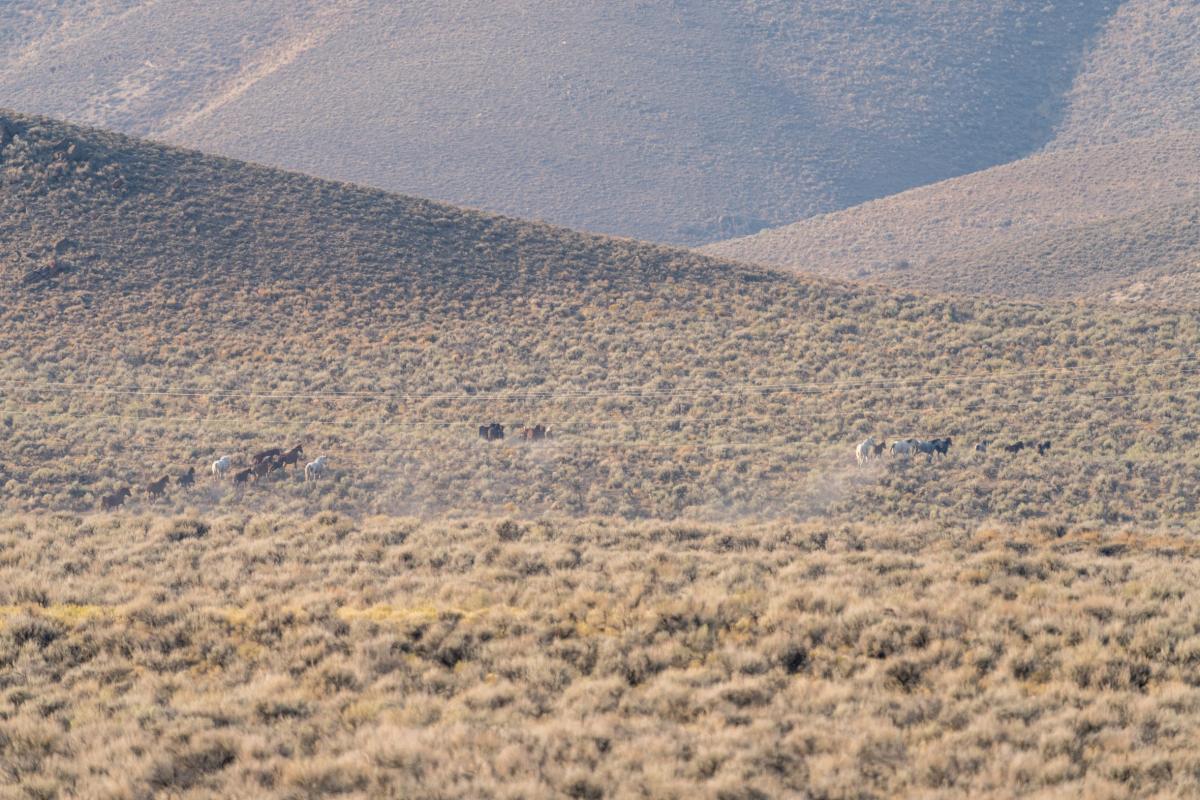

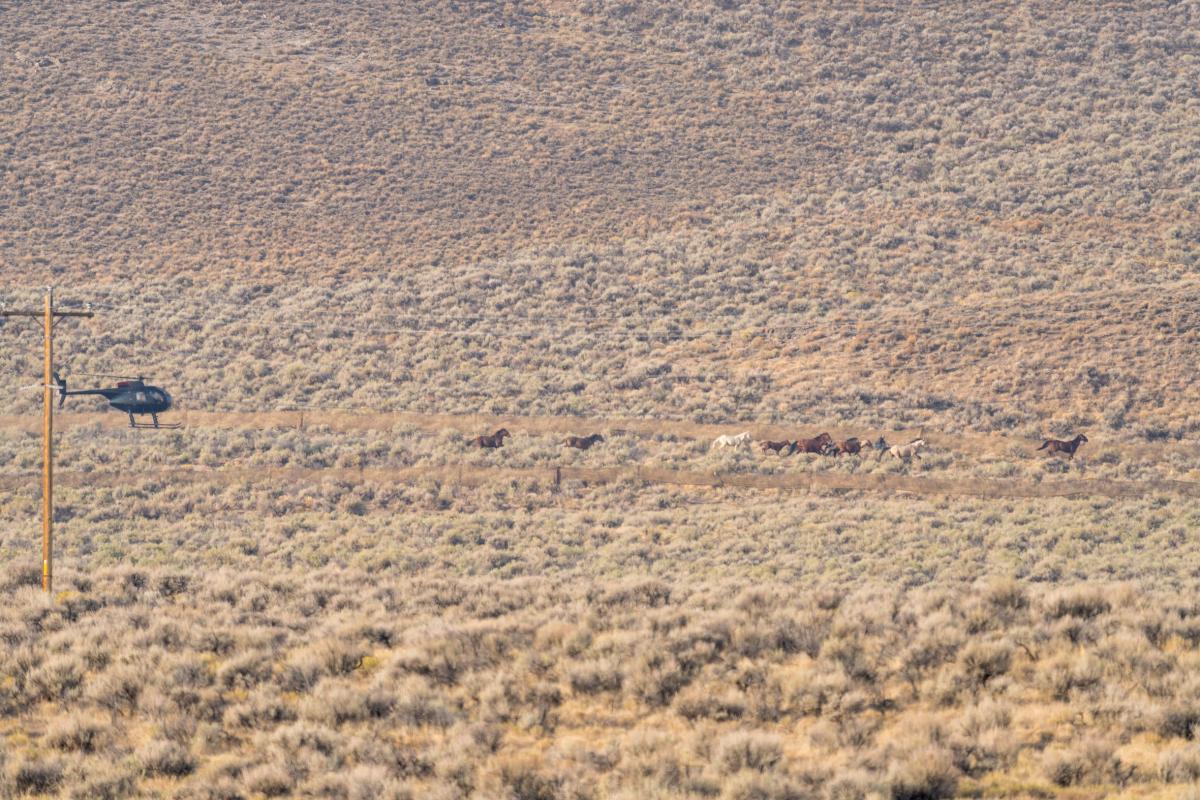

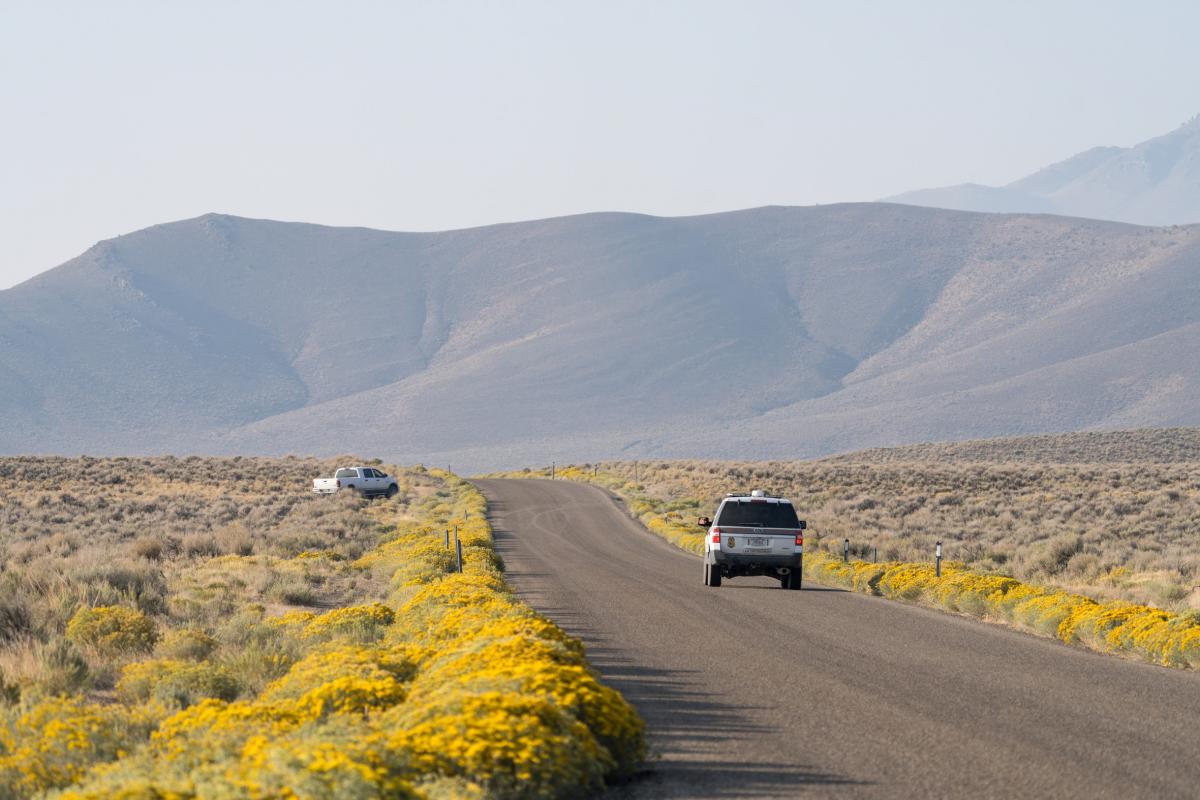
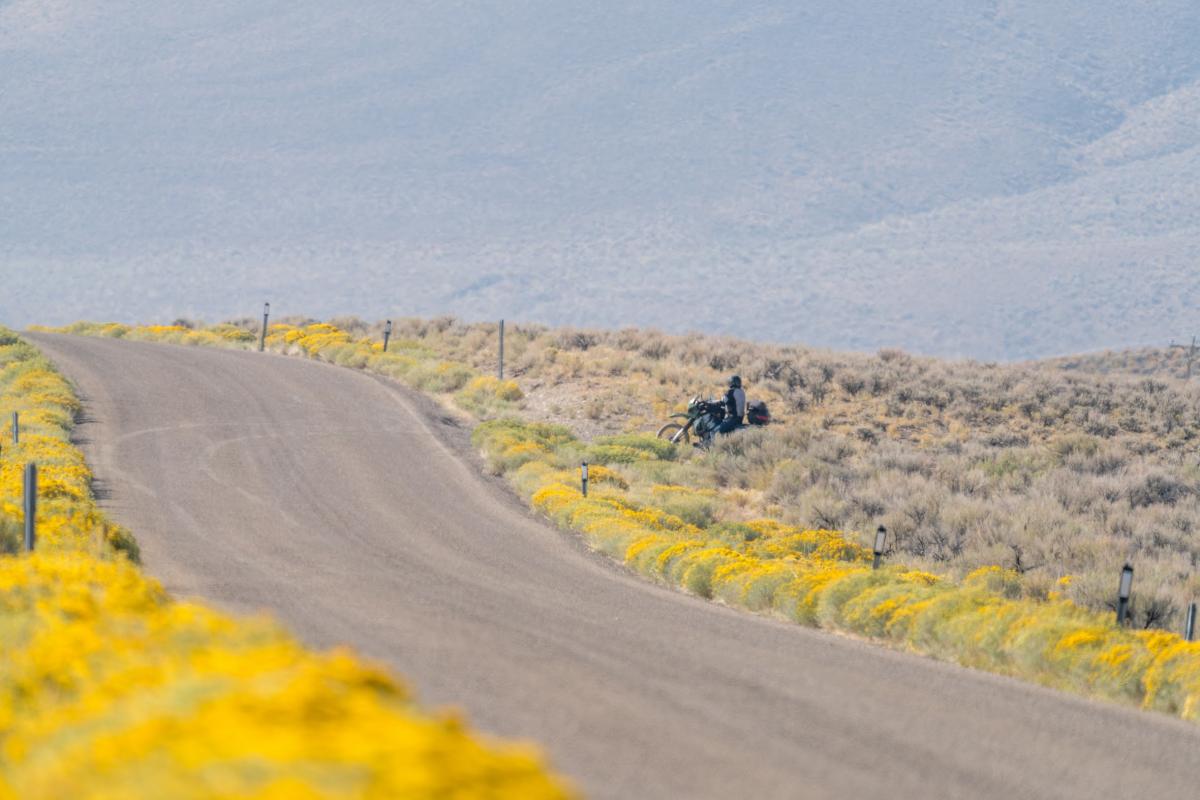
September 12, 2020: 18 wild horses were captured and there were two deaths.
-
At holding a 5 month old Sorrel mare, was euthanized, according to BLM, "due to fractured vertebrae and no prognosis for recovery."
-
1 Adult sorrel stallion, while being brought to trap, collapsed and immediately "expired."
There were 2 members of public on site today.
New observation point by a gravel pit about a mile away. Still too far to see anything. Also we could only see a tiny smidget of one side of the jute wing, and needed to be atop a gravel mound for that view to happen.
Our field representative asked if we could be instead move to a spot in the trees atop the hill overlooking the jute run, as closer tree-blind vantage points are often done in Utah, but the BLM declined.
Update: The day of this roundup we did not know about the (2) deaths even though we were on the ground. The BLM should be providing "meaningful observation". This is the biggest problem with BLM not allowing us to have a view of the trap. When all we are allowed to see is a sliver of a burlap wing and the horses vanish from view, we cannot monitor what happens to the horses.
The runs:
- Very few horses compared to the past few days. Only a few very small groups.
- The horses tend to zig-zag a lot, changing directions, as has been observed a lot on this roundup. Maybe it is the terrain or these horses want to evade more.
- The very first group used the thick trees to evade the helicopter, which gave up and searched for another group.
- The final group appeared fatigued, walking slowly until a final push.
- Horses could not be viewed in the ravine running into the jute. Helicopter at times couldn't even be seen.
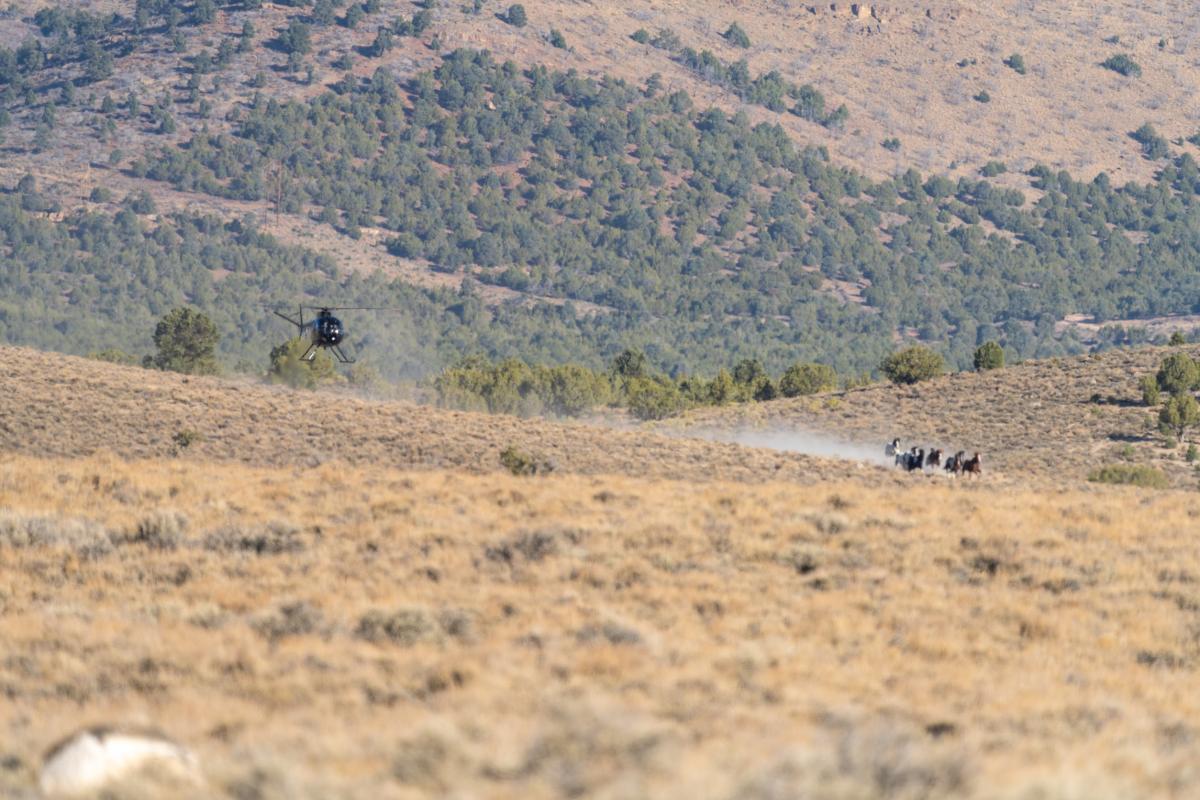
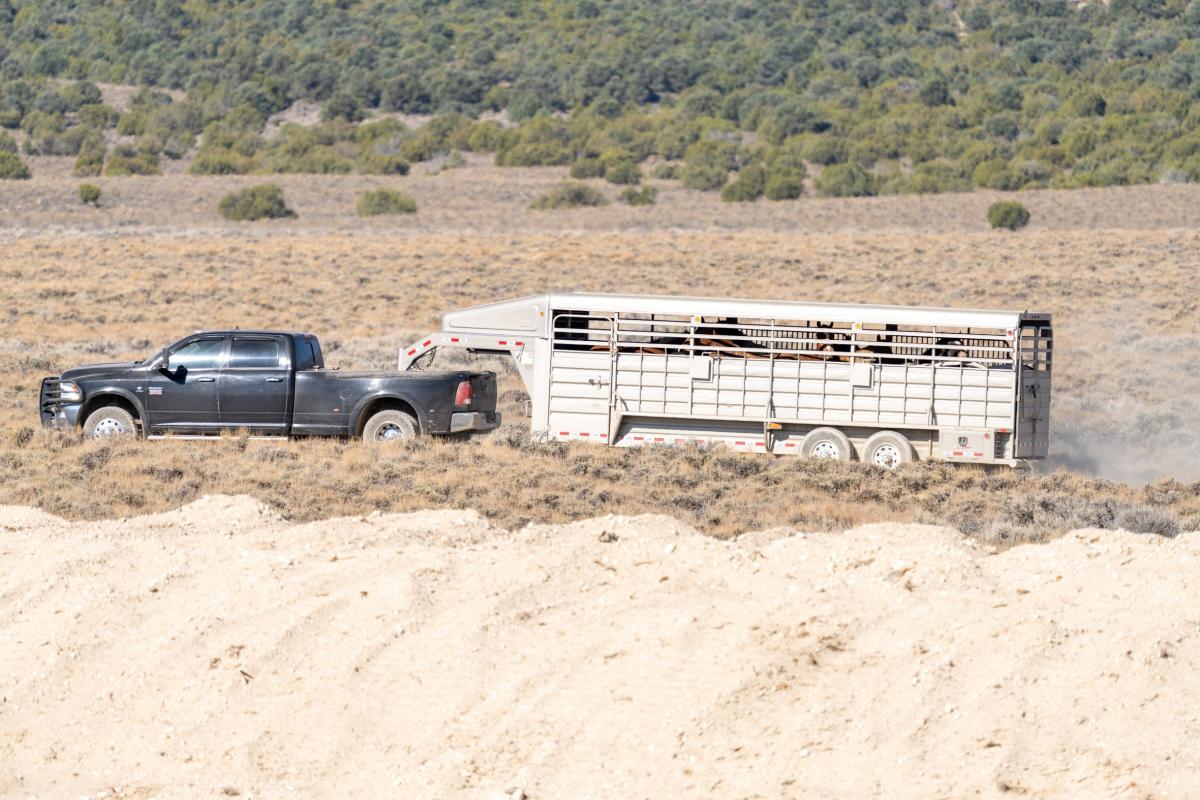
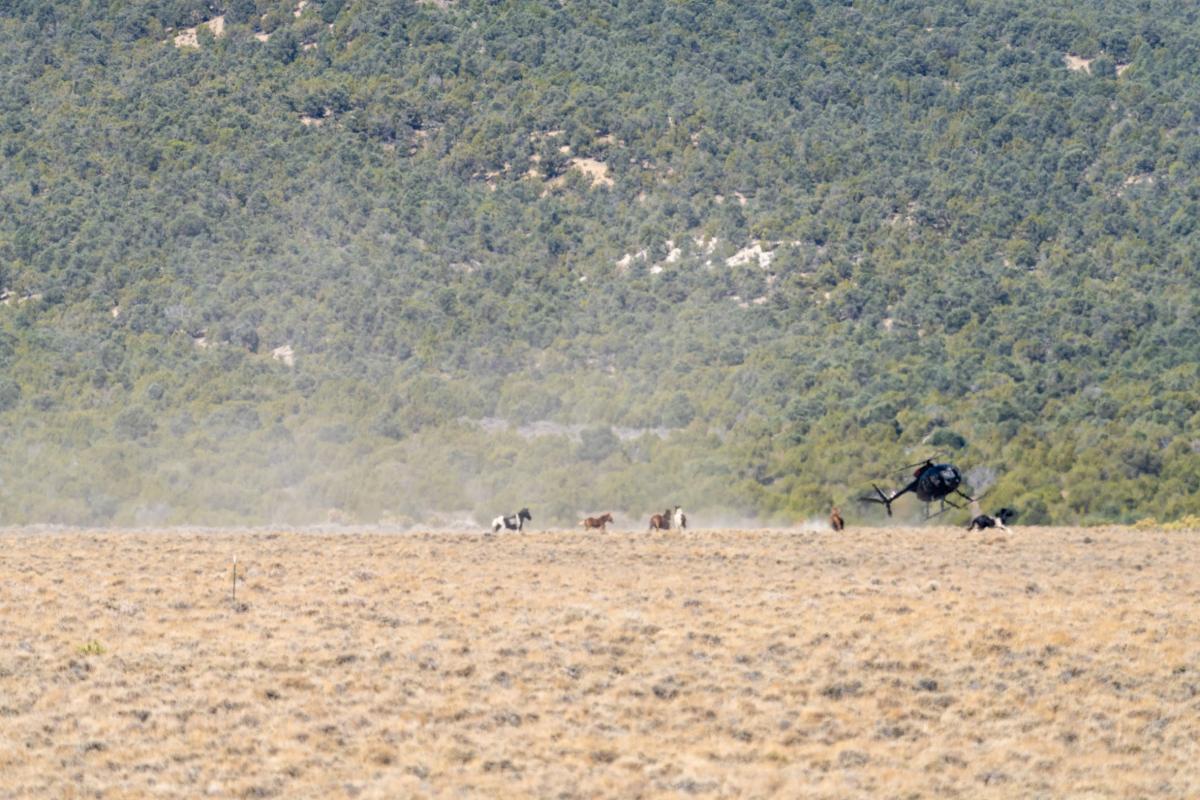
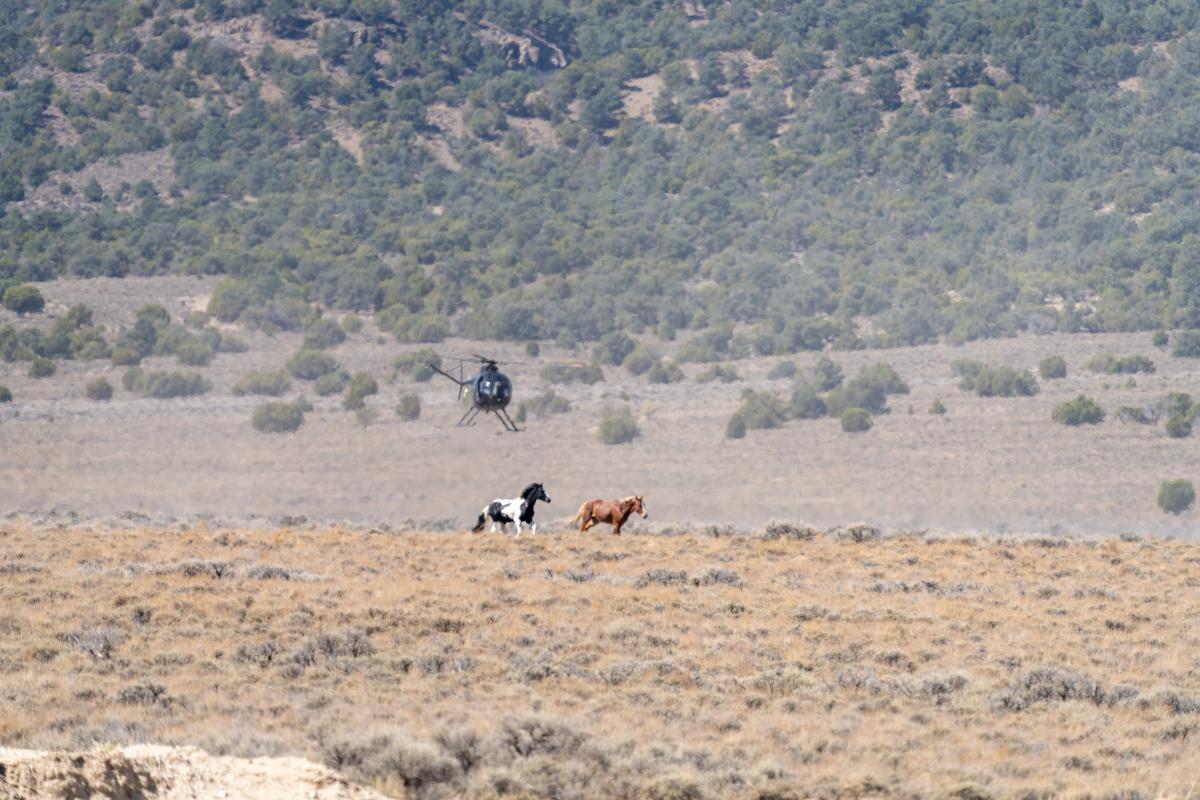

September 11, 2020: 30 mustangs were rounded up and removed from public lands.
- AWHC and a reporter were the only members of the public onsite at the roundup today. The day started at about 30 degrees and ended close to 80 degrees.
- We were placed at the same observation point, which is way too far to see anything, and no view of the trap at all.
- There is a fence and lots of trees, they could have had us much closer but choose to keep us where even with telephoto lenses we can barely see the horses, and are unable to assess any events.
- There were several runs of very small groups.
- As with yesterday, the final two groups came in very slow. Even though it was 70/80 degrees, the horses seemed acclimated to the now-colder 30 degree weather.
- No observable injuries or deaths, but we were far away and could not see trap.
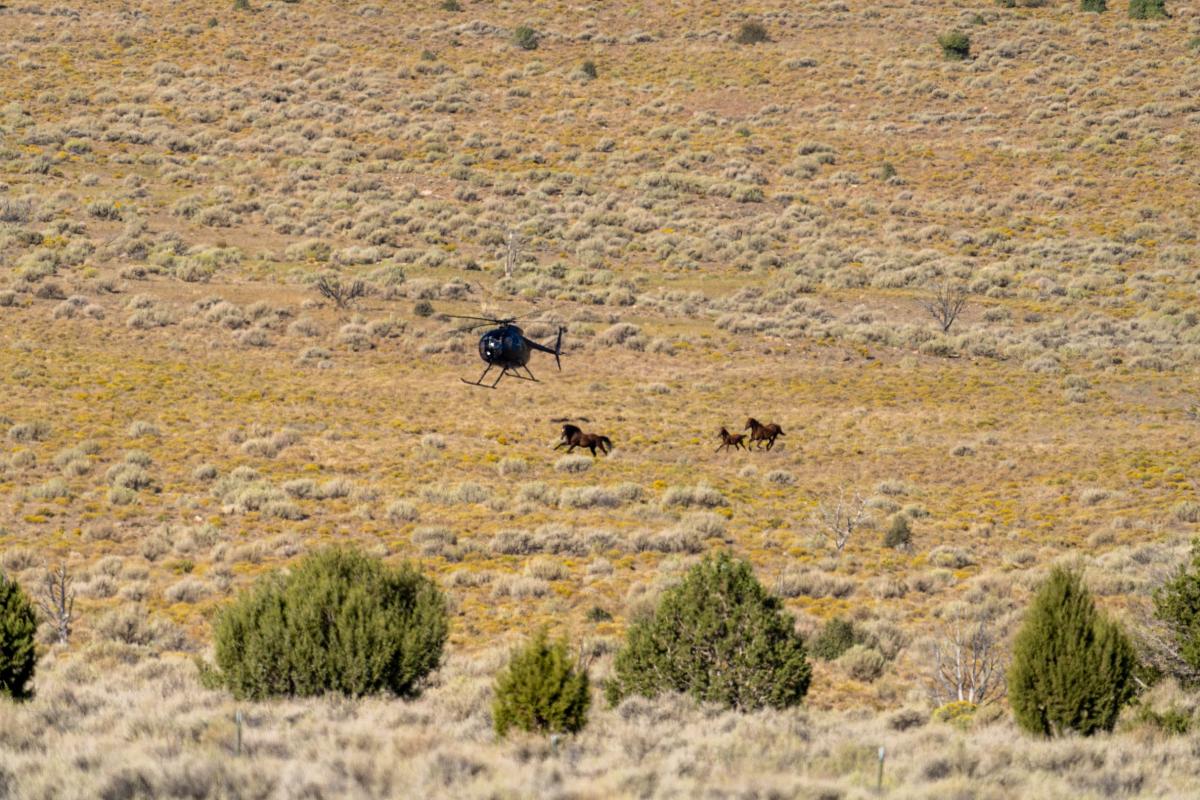
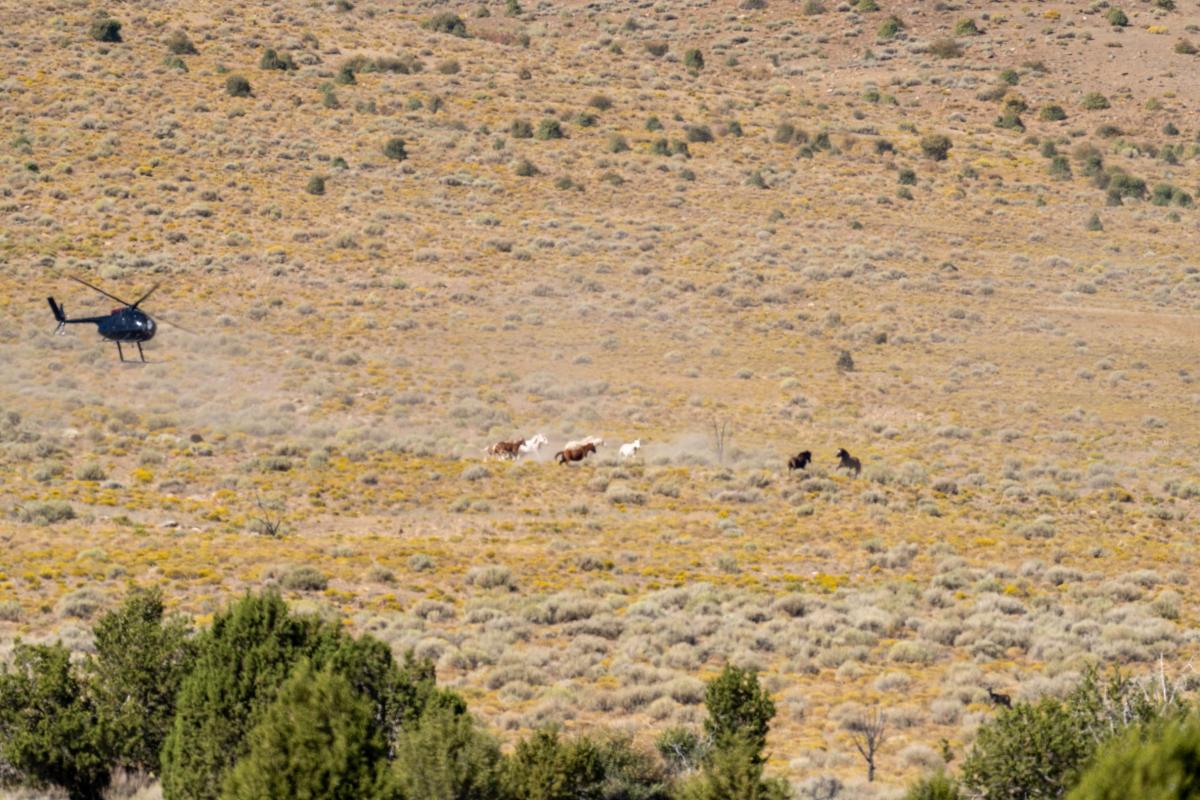

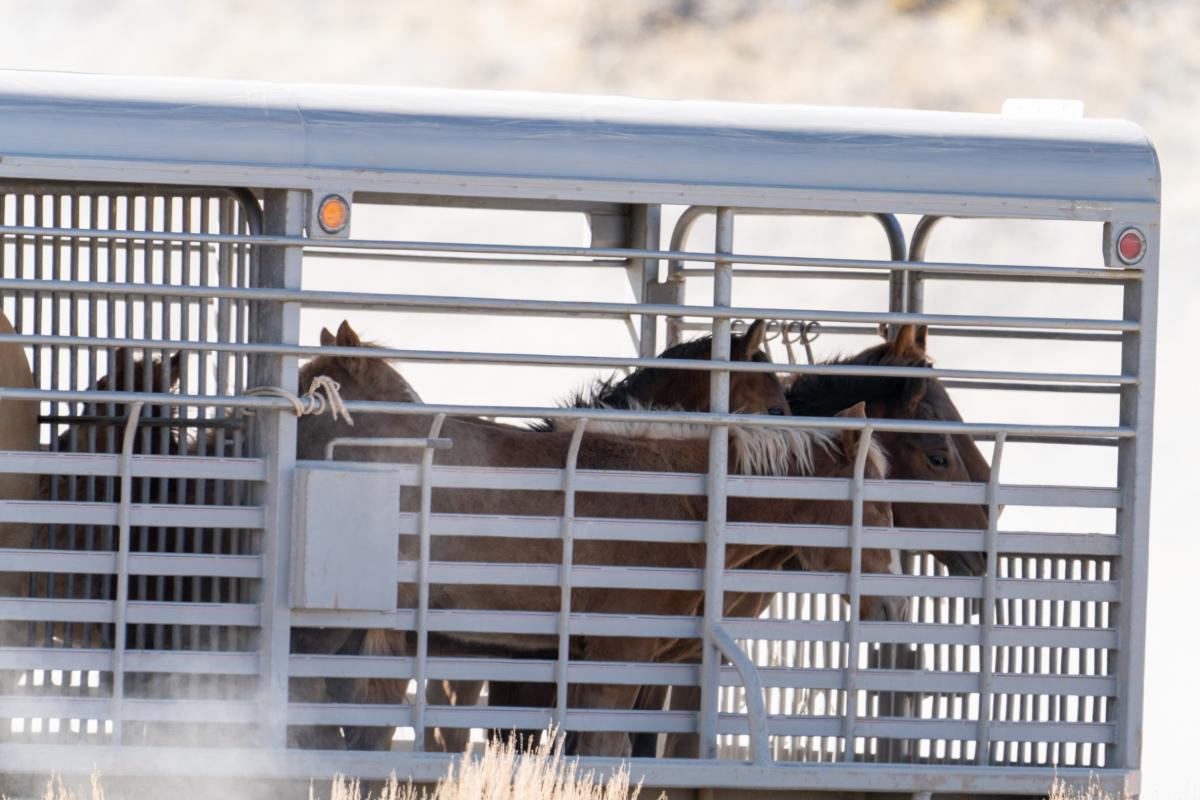
September 10, 2020: 103 wild horses were rounded up and removed today.
- AWHC and a reporter were the only members of the public onsite to view the Diamond Complex wild horse roundup today.
- The weather only reached about 80 degrees at hottest part of the day today.
- Located only 30 minutes outside of Eureka, right off a miner's highway.
- Before the roundup, we stopped at the Judas horse pen and watched them load. Two of the Judas horses escaped and ran around. The Ranger had to block the miner highway for safety as the Judas horse ran around for about 5 minutes.
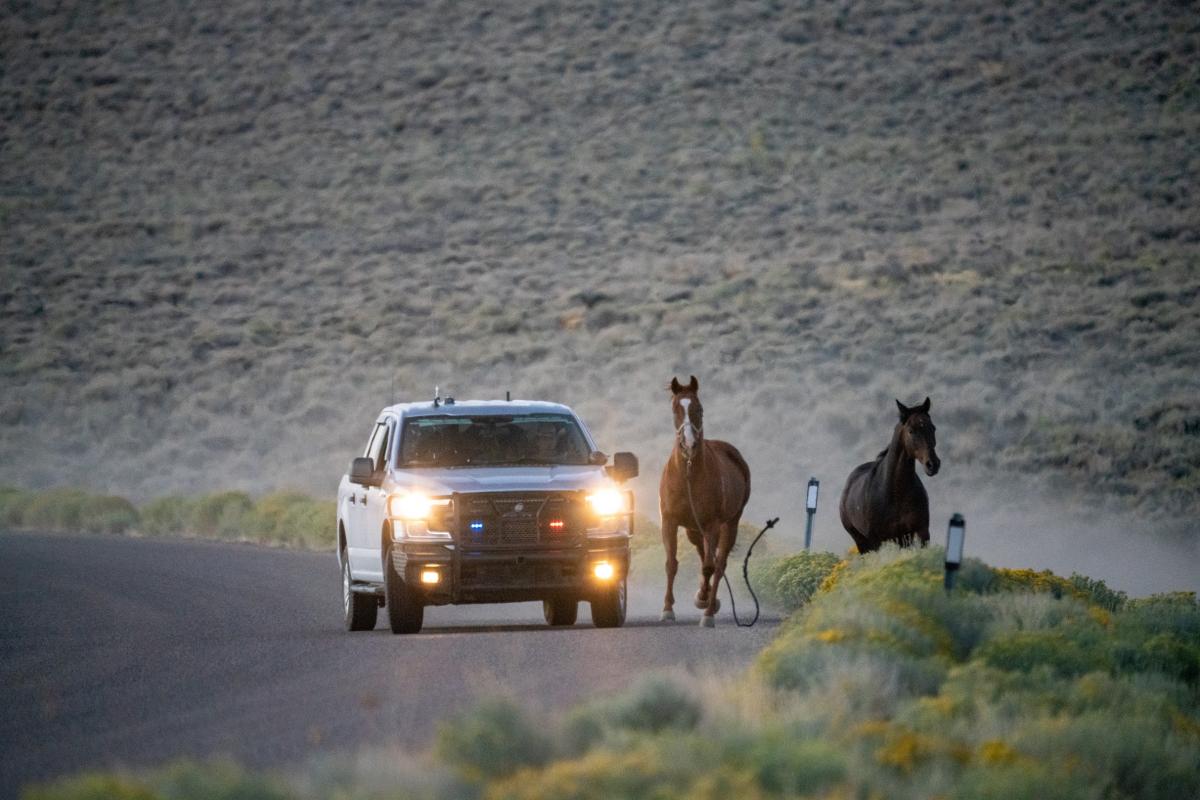
- There are barbed wire fences for cattle (or really to keep the horses out of the cattle areas, Nevada is a "fence-out" state). Half of the runs the horses did run down the slope right towards the fence, but the helicopter swooped ahead each time and was able to turn the horses well in time. No mishaps were observed.
- There are many cows in the area and also many barb wire fences. Also the highway is a miner's highway.
- Plenty of vegetation and water. Lots of rice grass. Many groves of trees indicating water. A spring could be observed from the road.
- There were several runs of very large groups (about 30 in one, about 40 in another).
- After the first group, several wranglers went out to lasso at least one adult horse. They brought the trailer over to where the horse was caught.
- The final group was moving slower and so the helicopter held back.
- The holding pen was dusty, the WHB Specialist says they watered it down twice today. We could not observe the trap from our viewing area at all, just the start of the jute wing.

